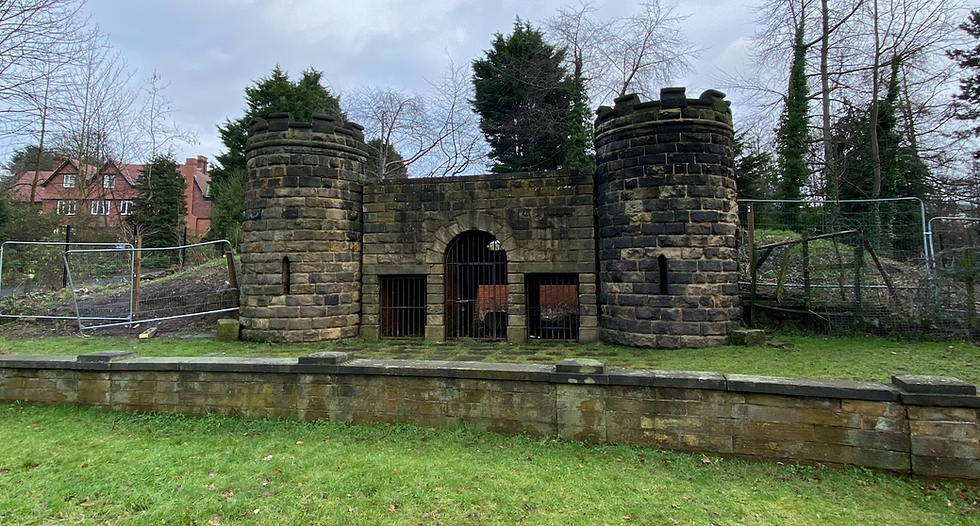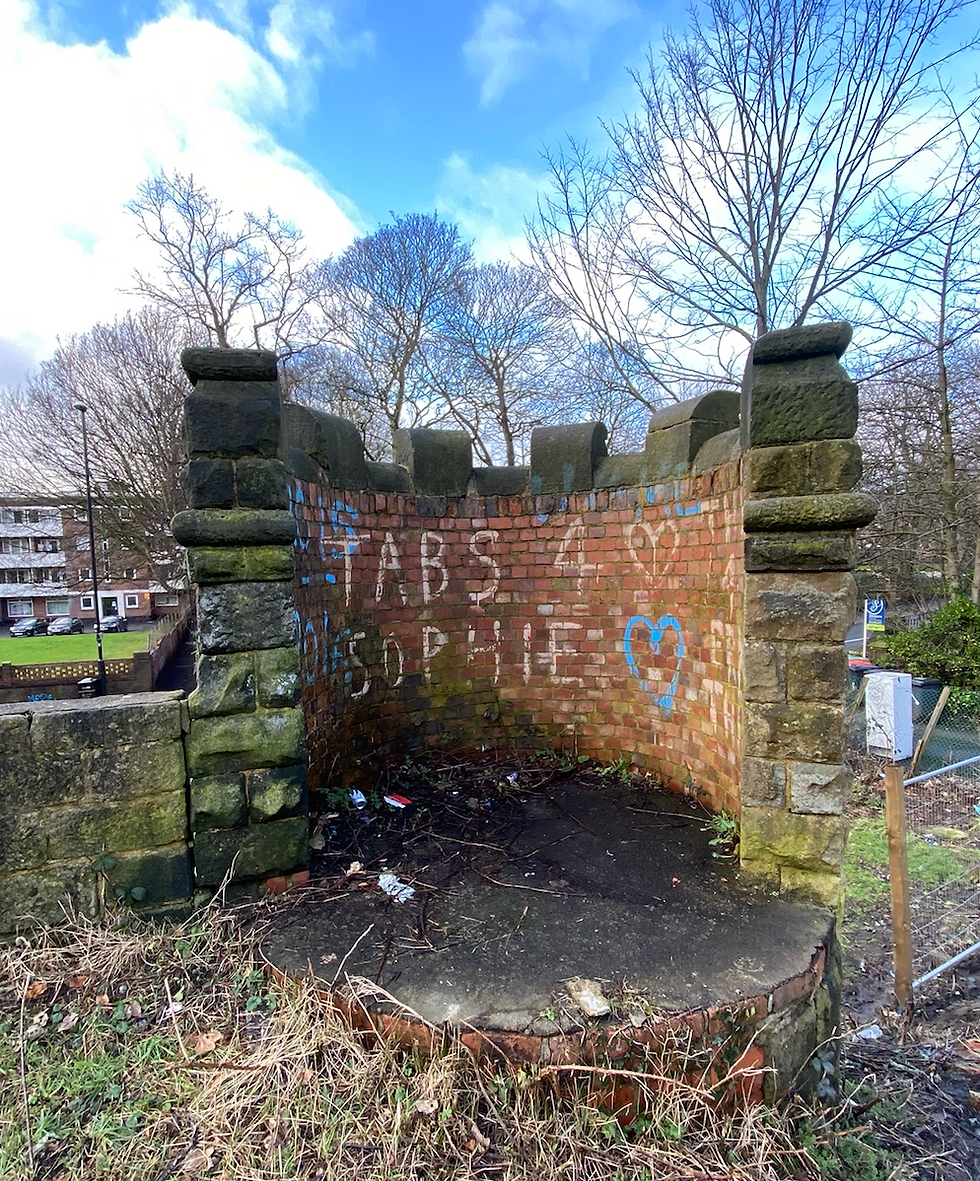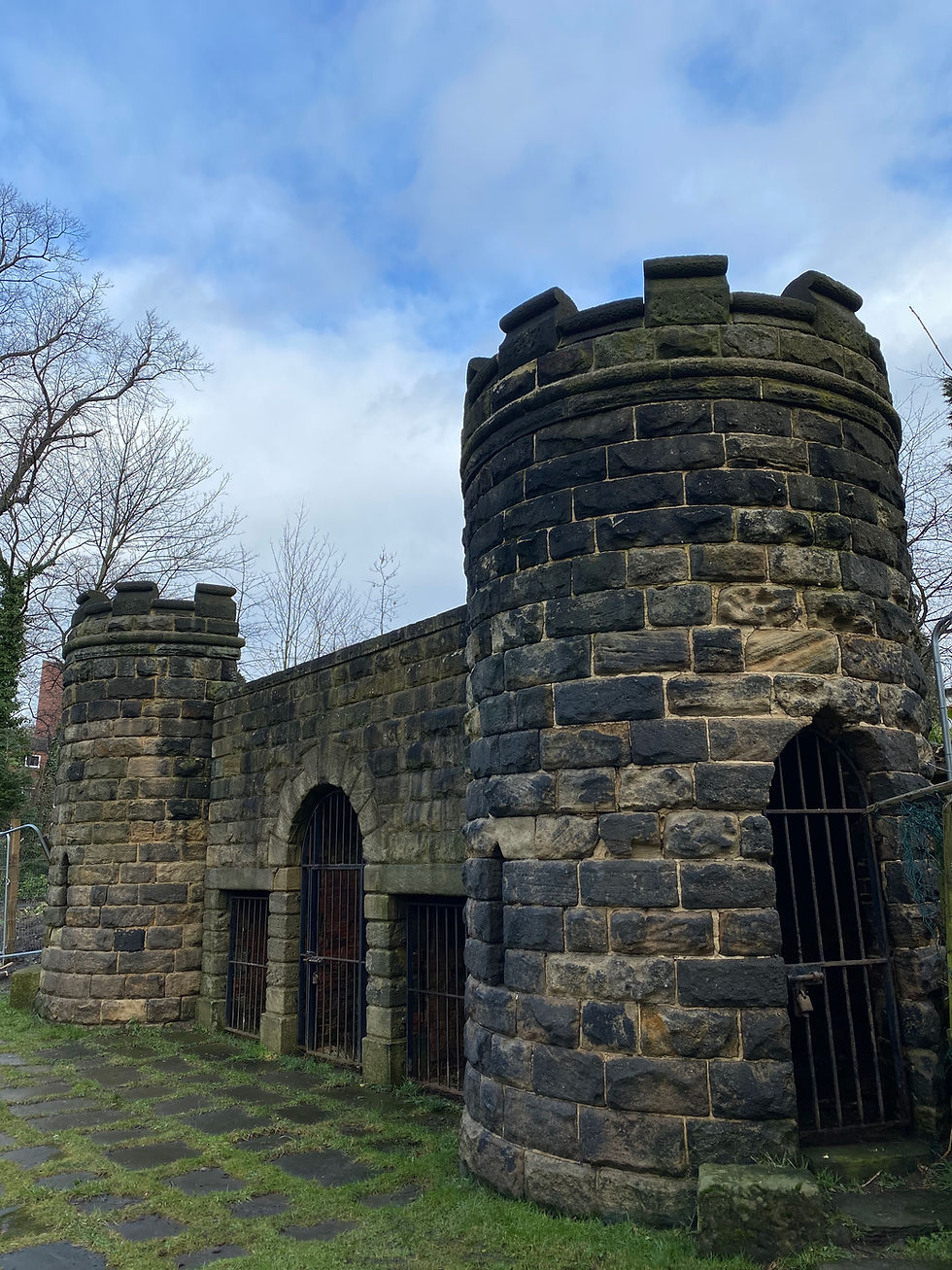Headingley Bear Pits - the story behind the failed Victorian Zoo
- timbarber
- Jan 30, 2021
- 4 min read
Updated: Feb 6, 2021

As a student living in Headingley in the 1980s, I walked past the strange towers looking like a mini castle on Cardigan Road many times. I remembered being told that they were the Headingley Bear Pits but hadn’t really given it much thought since.
But driving back from Leeds recently, I saw the structure again, pulled over the car and thought I would take a closer look and take some snaps. This then inspired me to find out a bit more about the history and why there were bears living in Headingley...
It turns out that back in the 1800's, before there was television, computer games and the internet, that Victorians had developed a passion for keeping exotic animals brought back from over the Empire in private collections or public zoo’s. With Leeds growing in importance through the growth of its industrialisation, particularly in the manufacture of textiles, Civic Pride in the city starting to grow.
Headingley had started to see the wealthy industrialists move away from the pollution in the city centre and large Victorian villas had started to crop up in the area for the rich and growing middle classes. There was still a lot of green space around Headingley and it was decided that this made the area ideal for the founding of Leeds Zoological and Botanical Garden.
The original plan was to home a massive zoo based on that in London's Regents Park, it would have fountains, lakes and bridges and be surrounded by a high stone wall. Funds would be raise by selling shares or subscription and John Marshall of Marshalls Mill fame purchased 200 shares at £10 each.

The Gardens and zoo were opened in 1840, and whilst not finished it was still an impressive attraction. It had been designed by William Billington, a Wakefield engineer, and Edward Davies, a local landscape gardener.
When the Gardens were first opened the bear pit was in place but with no bear! There was also an eagle, a monkey enclosure and some swans. It had been decided that elephants were too costly to keep and lions would need too much care, so a brown bear was considered a more reasonable addition to the attraction.
The Leeds Mercury reported at the time of opening with the following description
“Surrounded by a high wall within which on the west, south and east, is a plantation of trees in proper botanical arrangement, and on the
north are fruit trees trained against a wall. Beautiful slopes of grass, tasteful parterres and shrubberies, with winding walks, two very handsome ponds with islands and a beautiful fountain. Near the entrance to the grounds from Headingley is a conservatory containing a beautiful collection of geraniums and a variety of exotic plants and flowers. The Zoological department as yet confined to a fine pair of swans and some other fowl, monkeys and tortoises. “

Three years after the attraction opened a brown bear arrived. The gardens finally had their only large animal exhibit!


As you can see from my photographs, the castle like front hides a circular pit behind where the animal was kept in a small enclosed circular space.
The towers you can still see today both have spiral staircases inside which would be used by the public to climb up and bring them out on top of the bear pit, where they were able to look down from a

viewing platform and the turrets.
There are reports of a tree being in the centre of the bear pit which the bear would climb to receive buns from the public.
The Zoological Gardens only lasted eight years and in 1948, the gardens were forced to close.
The reason behind the failed tourist attraction is believed to be down to a couple of factors. Firstly, the entrance fee was seen as too expensive for the working classes of Leeds and also too far for them to travel on foot. Then the local churches forced the Zoo to close on Sunday mornings as it was seen to be affecting church attendance – with many factories working 6 days a week, the attraction really struggled to attract visitors in the required numbers.
The site was re-opened temporarily under new management, as the Royal Gardens but didn’t last long before it closed again.
The entire site was sold to a businessman named Thomas Clapham for building plots. The City built the road we now know as Cardigan Lane (named after Lord Cardigan) and houses were built either side of the road. Now all that is left is the now Grade1 listed stone castellated turrets of the original bear pit and some of the surrounding wall.

The crumbling turrets were restored in the mid 1900’s but when I looked today they seem to have been left to rot, there is litter in the stairwells and graffiti on the reverse of the turrets. Sadly there is no blue plaque to let local residents know about the story of the long lost zoo.
It seems Civic Pride in heritage building does not exist here any more.
Having seen the size of the area the bear would have lived during his 5 years in captivity there it is perhaps a blessing that the attraction never lasted.







Comments